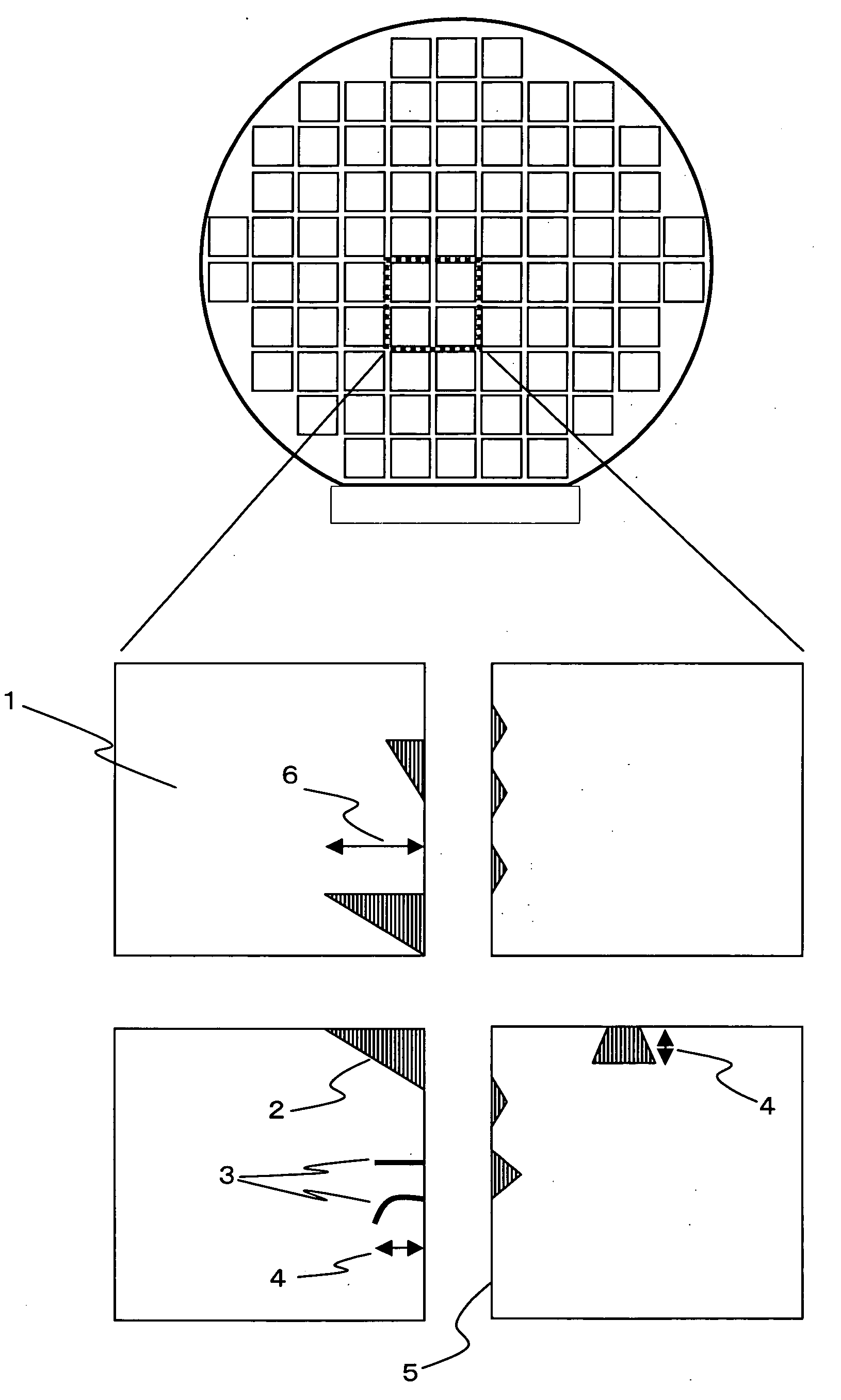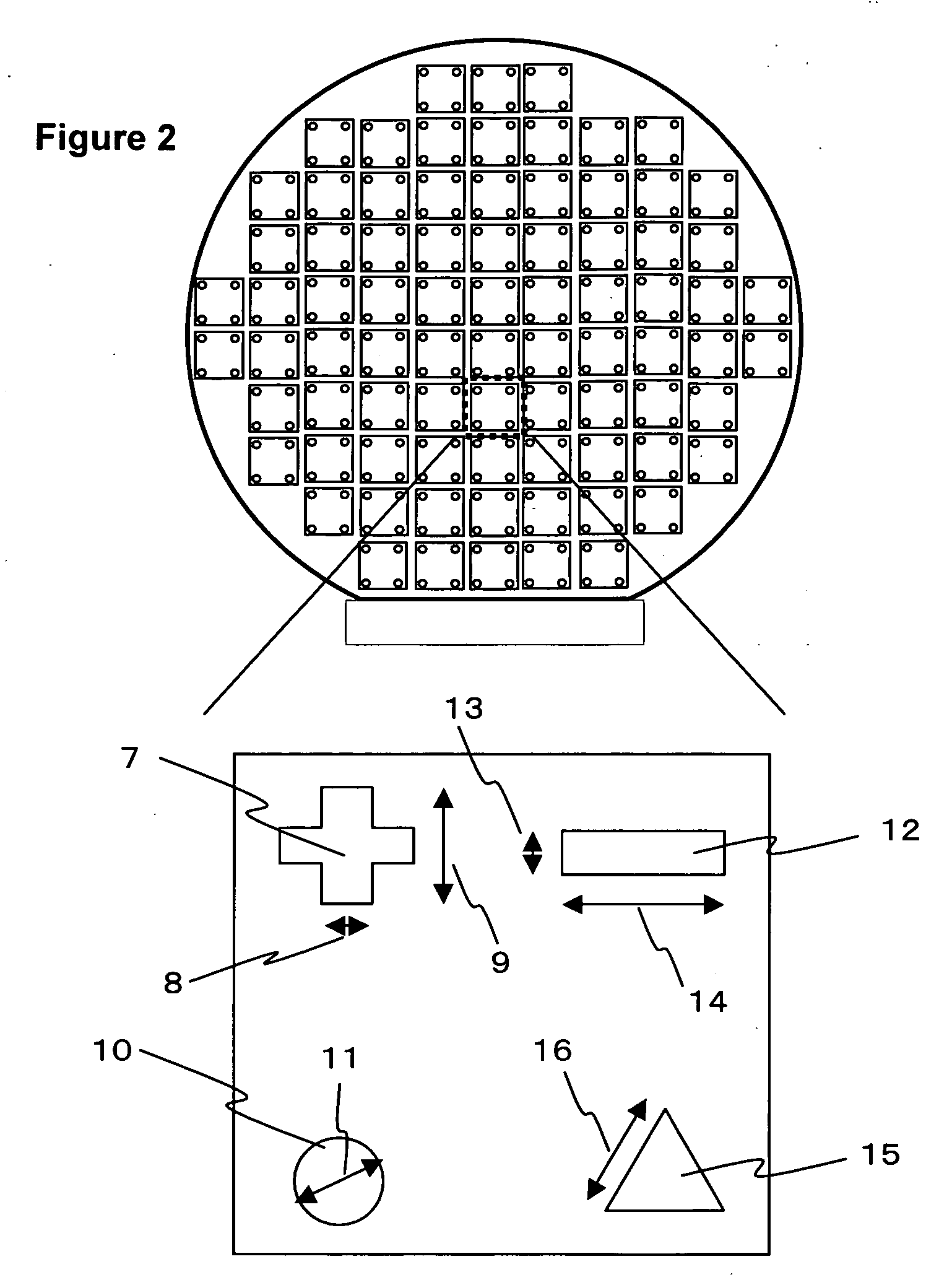Adhesive composition for semiconductor, semiconductor device making use of the same and process for producing semiconductor device
a technology of adhesive composition and semiconductor, which is applied in the direction of solid-state devices, synthetic resin layered products, electrical devices, etc., can solve the problems of expansion of assembling area, inability to adopt conventional injection methods, and unsealed parts, and achieve excellent reliability, stable conduction, and detection of alignment marks
- Summary
- Abstract
- Description
- Claims
- Application Information
AI Technical Summary
Benefits of technology
Problems solved by technology
Method used
Image
Examples
synthesis example 1
Synthesis of Organic-Solvent-Soluble Polyimide A
[0103]2,2-bis(3-amino-4-hydroxyphenyl) hexafluoropropane (hereunder, referred to as BAHF) 24.54 g (0.067 mol), 1,3-bis(3-aminopropyl) tetramethyl disiloxane (hereunder, referred to as SiDA) 4.97 g (0.02 mol) and as an end capping agent, 3-aminophenol (hereunder, referred to as 3-Aph) 2.18 g (0.02 mol) were dissolved in NMP 80 g under a dried nitrogen flow. To this, bis(3,4-dicarboxyphenyl)ether dianhydride (hereunder, referred to as ODPA) 31.02 g (0.1 mol) was added together with NMP 20 g, reacted at 20° C. for one hour, and then stirred at 50° C. for 4 hours. After that, xylene 15 g was added and stirred at 180° C. for 5 hours while water was distilled off azeotoropically together with the xylene. After finishing the stirring, the solution was poured into water 3 liters to obtain a precipitated white polymer. This precipitate was collected by filtration and after washed with water 3 times, it was dried at 80° C. for 20 hours by a vacu...
synthesis example 2
Synthesis of Organic-Solvent-Soluble Polyimide B
[0104]BAHF 18.31 g (0.05 mol), SiDA7.46 g (0.03 mol) and 3-Aph 4.37 g (0.04 mol) as an end capping agent were dissolved in NMP 150 g under a dried nitrogen flow. To this, 2,2-bis(4-dicarboxyphenoxy)phenyl propane dianhydride (hereunder, referred to as BSM) 52 g (0.1 mol) was added together with NMP 30 g and reacted at 20° C. for one hour, and then stirred at 50° C. for 4 hours. After that, it was stirred at 180° C. for 5 hours. After finishing the stirring, the solution was poured into water 3 liters to obtain a precipitated white polymer. This precipitate was collected by filtration and after washed with water 3 times, it was dried at 80° C. for 20 hours by a vacuum drier. When an infra-red absorption spectrum of the obtained solid polymer was obtained, absorption peaks of an imide structure originated from a polyimide were detected around 1780 cm−1 and 1377 cm−1. In this way, an organic-solvent-soluble polyimide B, which has a functi...
synthesis example 3
Synthesis of Organic-Solvent-Soluble Polyimide C
[0105]BAHF 14.65 g (0.04 mol) and SiDA 9.96 g (0.04 mol) were dissolved in NMP 130 g under a dried nitrogen flow. To this, 2,2-bis(3,4-dicarboxyphenyl) hexafluoropropane dianhydride (hereunder, referred to as 6FDA) 44.42 g (0.1 mol) was added together with NMP 20 g and stirred at 20° C. for one hour, and then it was stirred at 50° C. for 2 hours. To this, as an end capping agent, 3-Aph 3.27 g (0.04 mol) was added and stirred at 50° C. for 2 hours, and then it was stirred at 180° C. for 5 hours. After finishing the stirring, the solution was poured into water 3 liters to obtain a precipitated white polymer. This precipitate was collected by filtration and after washed with water 3 times, it was dried at 80° C. for 20 hours by a vacuum drier. When an infra-red absorption spectrum of the obtained solid polymer was obtained, absorption peaks of an imide structure originated from a polyimide were detected around 1780 cm−1 and 1377 cm−1. In ...
PUM
| Property | Measurement | Unit |
|---|---|---|
| light transmittance | aaaaa | aaaaa |
| adhesive strength | aaaaa | aaaaa |
| adhesive strength | aaaaa | aaaaa |
Abstract
Description
Claims
Application Information
 Login to View More
Login to View More - R&D
- Intellectual Property
- Life Sciences
- Materials
- Tech Scout
- Unparalleled Data Quality
- Higher Quality Content
- 60% Fewer Hallucinations
Browse by: Latest US Patents, China's latest patents, Technical Efficacy Thesaurus, Application Domain, Technology Topic, Popular Technical Reports.
© 2025 PatSnap. All rights reserved.Legal|Privacy policy|Modern Slavery Act Transparency Statement|Sitemap|About US| Contact US: help@patsnap.com



